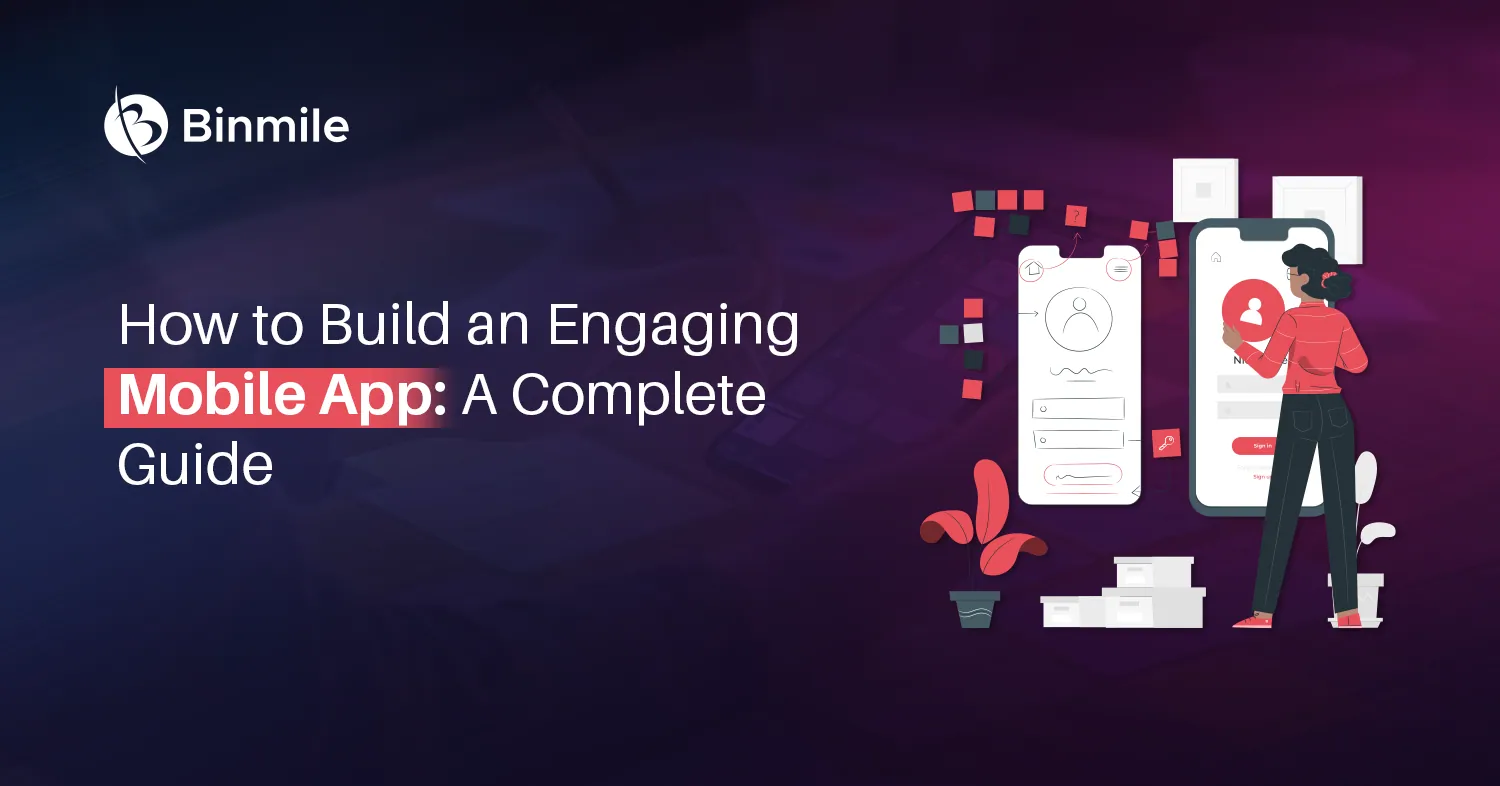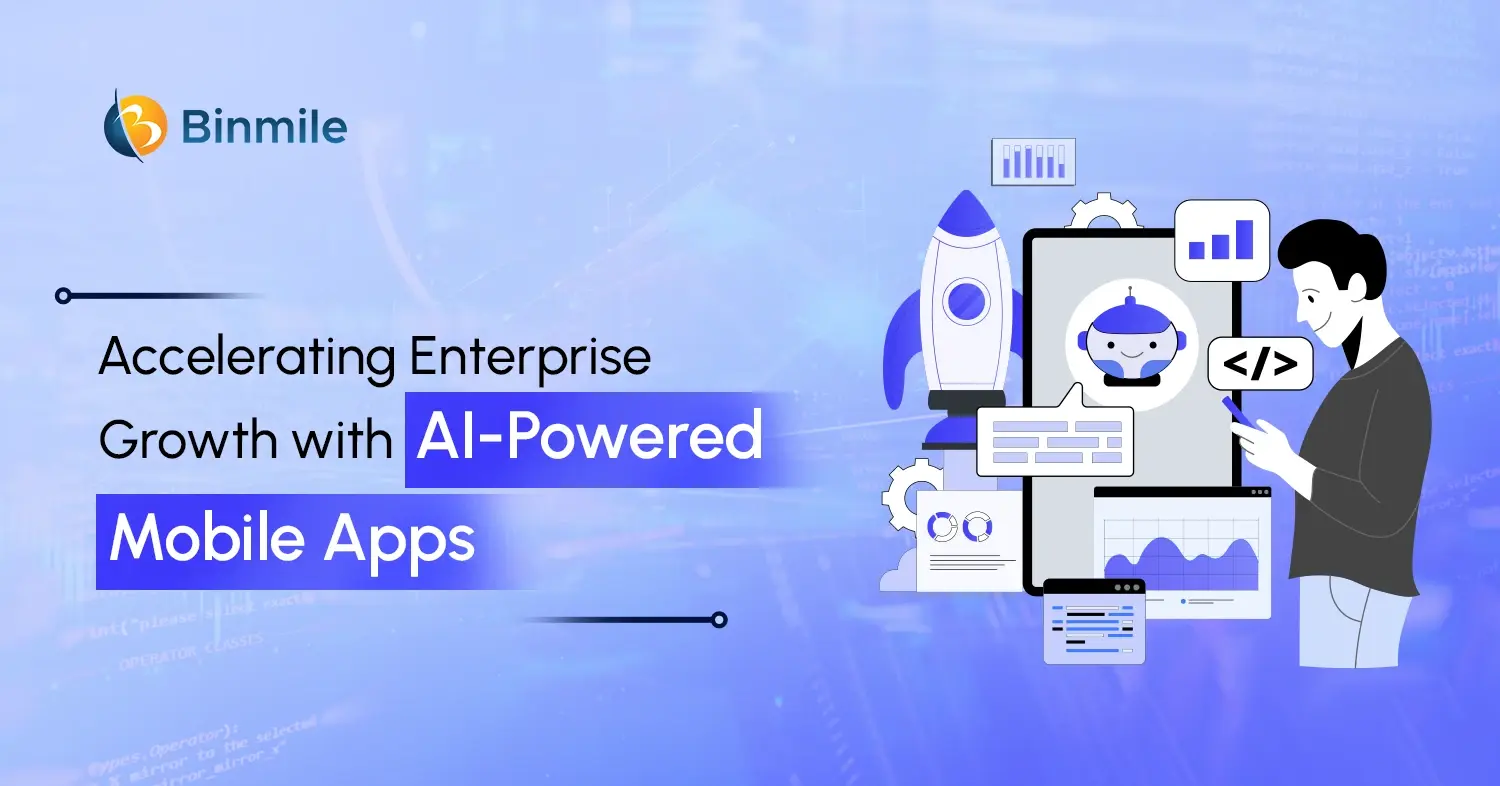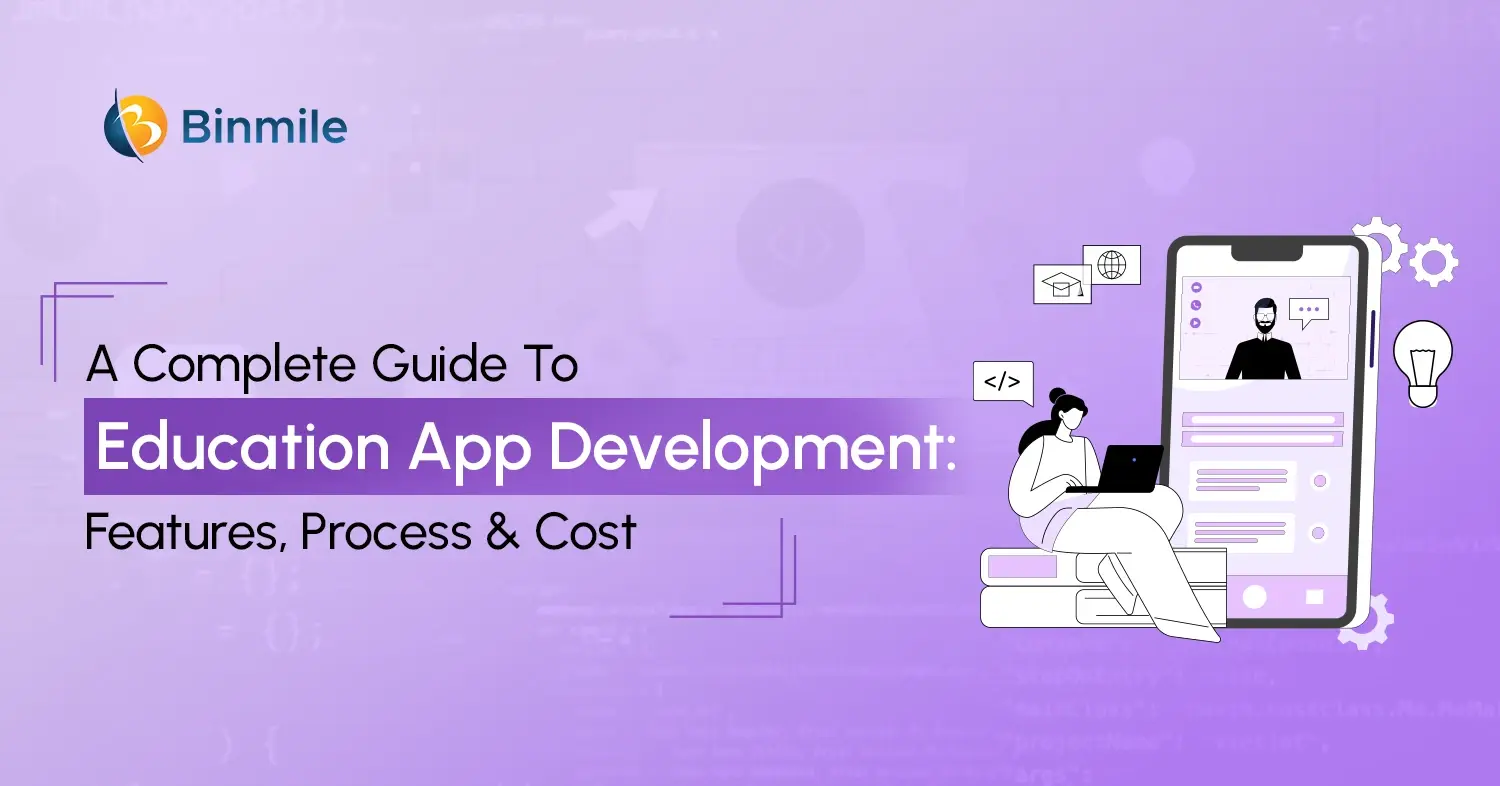Today, the market for mobile technologies and services is expanding rapidly and all business enterprises expect an effective online presence. A good user experience makes users want to use the app again, leave reviews, give good ratings, and recommend it to other potential users. With multiple apps competing for the same user attention on Apple’s App Store and Google Play, developers are faced with the task of making their app seamless and fostering customer delight at every touchpoint to stand out. The same scenario is possible with a successful mobile app developed through a unique app development process. A good mobile app minimizes the effort and confusion of end-users. That is why the importance and value of building an engaging mobile app have increased significantly. This blog outlines a 12-step process for designing a mobile app for your business and explains why mobile app engagement metrics are crucial for retaining users.
Why Invest in Building a Highly Engaging Mobile App?
In a post-COVID world, businesses require engaging mobile apps as consumers prefer contactless interactions. According to Statista, during the first half of 2024, the United States was the leading app market, with the Apple App Store and the Google Play Store generating approximately $15 billion in revenue. Additionally, global revenue from mobile apps soared to over $318 billion. This data highlights the growing importance of mobile apps for business growth.
5 Primary Benefits of in Building Engaging Mobile App
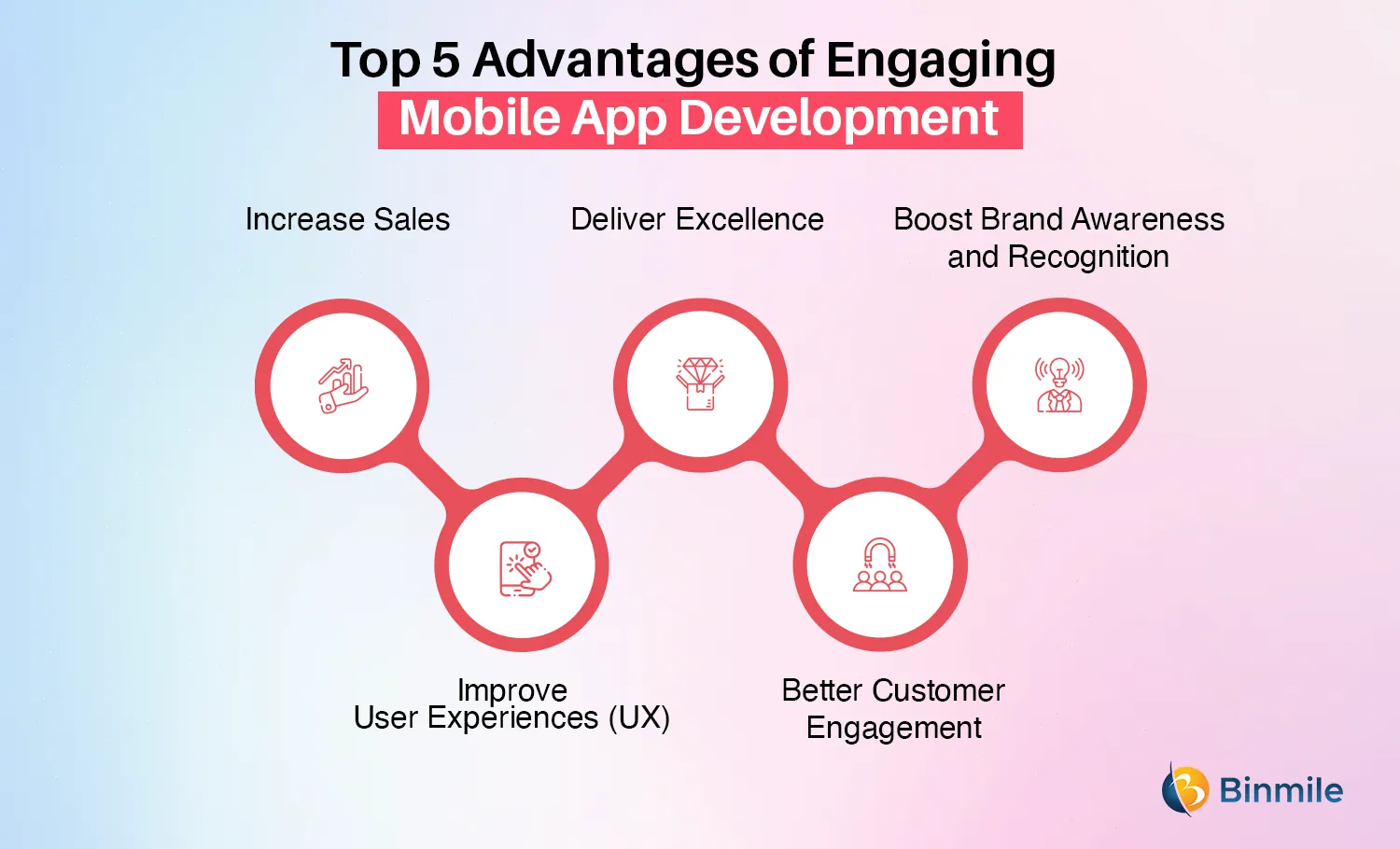
- Increase Sales: Every business enterprise expects to earn huge profit margins by increasing the sale of its products and services. It is possible only with a mobile app that helps in increasing the consumer base, sales, and conversions. About 19% of retail sales come from mobile and mobile apps deliver 3x more conversions than mobile sites. That is why it is better to invest in a mobile app rather than a mobile site.
- Improve User Experiences (UX): Mobile app users prefer the best user experience when they search for the best information with handheld devices. A well-defined app can assist enterprises in meeting their customers where they are. So, a user-friendly app is vital to improving the customer experience when they shop and search for information online.
- Deliver Excellence: When it comes to delivering excellence through unique marketing channels, a mobile app works as an effective marketing and sales tool. This tool is vital for acquiring, pleasing, and retaining customers. A professional app helps you solve your customers’ problems and answer their queries.
- Better Customer Engagement: Engaging apps can enhance customer engagement and boost sales by increasing consumers’ overall time with a particular brand. These apps, in turn, increase the odds of a deal. Mobile e-commerce now accounts for nearly 40 percent of total digital revenue in the eCommerce sector. It also prevents your customers from purchasing a product from competitors. 46% of your consumers are less likely to favor competitors when using your mobile app.
- Boost Brand Awareness and Recognition: The prime thing an app offers to consumers is brand communication and awareness. It provides a channel to interact with your target market and foster loyalty and trust. When you expose your app to consumers, they are more likely to make a purchase. Engaging apps are essential for enhancing the visibility of your brand.
Key Factors Making Your Mobile App Engaging with Your Customers
A mobile app is a critical characteristic of every digital strategy for business enterprises. A well-built app can help your business customers and grow your business. Simply opt for a secure, scalable, and user-friendly app by collaborating with a professional mobile app development company. Go through some prime factors that make your mobile apps engaging with your customers.
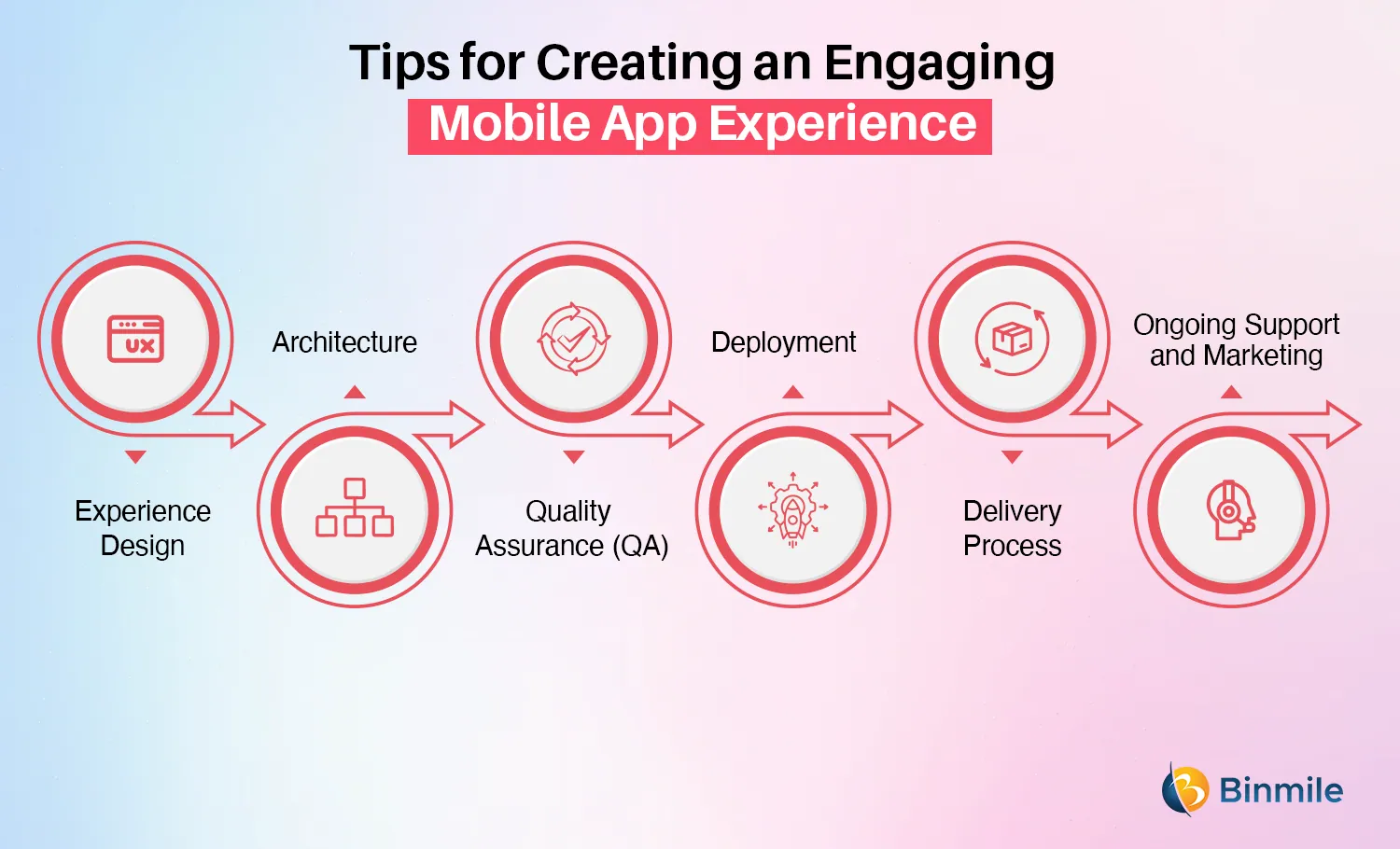
1. Experience Design
An app hardly gets 60 seconds to impress a customer. So, design and user interaction (UI) make a big difference in the success of an app. Customers get a good design experience with deep design competencies embedded in experience engineering. Some of the prime elements that help you design a successful app include:
- Customer journey mapping
- UI/UX design
- User testing
- Customer focus groups
- IT backend and integration
Engineering a secure and scalable back-end system is vital for giving your mobile app an edge. Make sure your app developers have excellent digital design competency and software expertise with the ability to eliminate hardware issues and shorten the development cycle. Make your app easy to exchange information with other apps via relevant APIs using modern technologies and platforms.
2. Architecture
A clearly defined architecture gives you clarity about the design, functionality, user experience, data layers, and features when you build an app. You need to pick a specific form of architecture relevant for building apps and developing the roadmap. It gives you better control over scalability, security, and analytics. With a well-defined architecture, you also get better insights into customer behavior, preferences, buying patterns, and individual data.
3. Quality Assurance (QA)
You also need an active QA team that can plan as per changing requirements of the mobile app. It is also concerned with the strategy of app usage, user test cases, and app functionality of different devices, systems, and platforms.
4. Deployment
The process of deployment starts with the analysis of deployment maturity. It relates to a strategic rollout plan to define system changes, app submissions, and marketing. First, conduct a pilot deployment on a small scale before going with a large-scale rollout to address challenges. App submission is the last deployment stage concerning the secure approval of different app stores.
5. Delivery Process
Launching an app does not ensure success; you need to think about design review, coding, and bug fixing to cope with newer problems. Ensure rapid development with Agile/Scrum methodology with frequent deliveries and customers’ touchpoints. This process relates to data conversion and test case documentation as per user and system requirements with actionable insights into updates and upgrades.
6. Ongoing Support and Marketing
Support and maintenance are integral aspects of your app’s success. Ensure your dedicated customer support team offers updates and flexible support to customers via an issue management process. Marketing comes into action when you need to reach your customers with a feature-rich app with a seamless UI. Structure your app marketing strategy around app development trends, user behavior, and attitudes to effectively engage with customers.
Apart from all these things, you also need a digital partner who understands the target market, challenges, and your strategic intent concerning your mobile app development needs.
Step-by-Step Guide to Building a Successful & Engaging Mobile App
Making the actual app is a lengthy process, and you need to abide by several steps for getting a perfect mobile app. Look at the following steps to get an appealing business app in 2024.
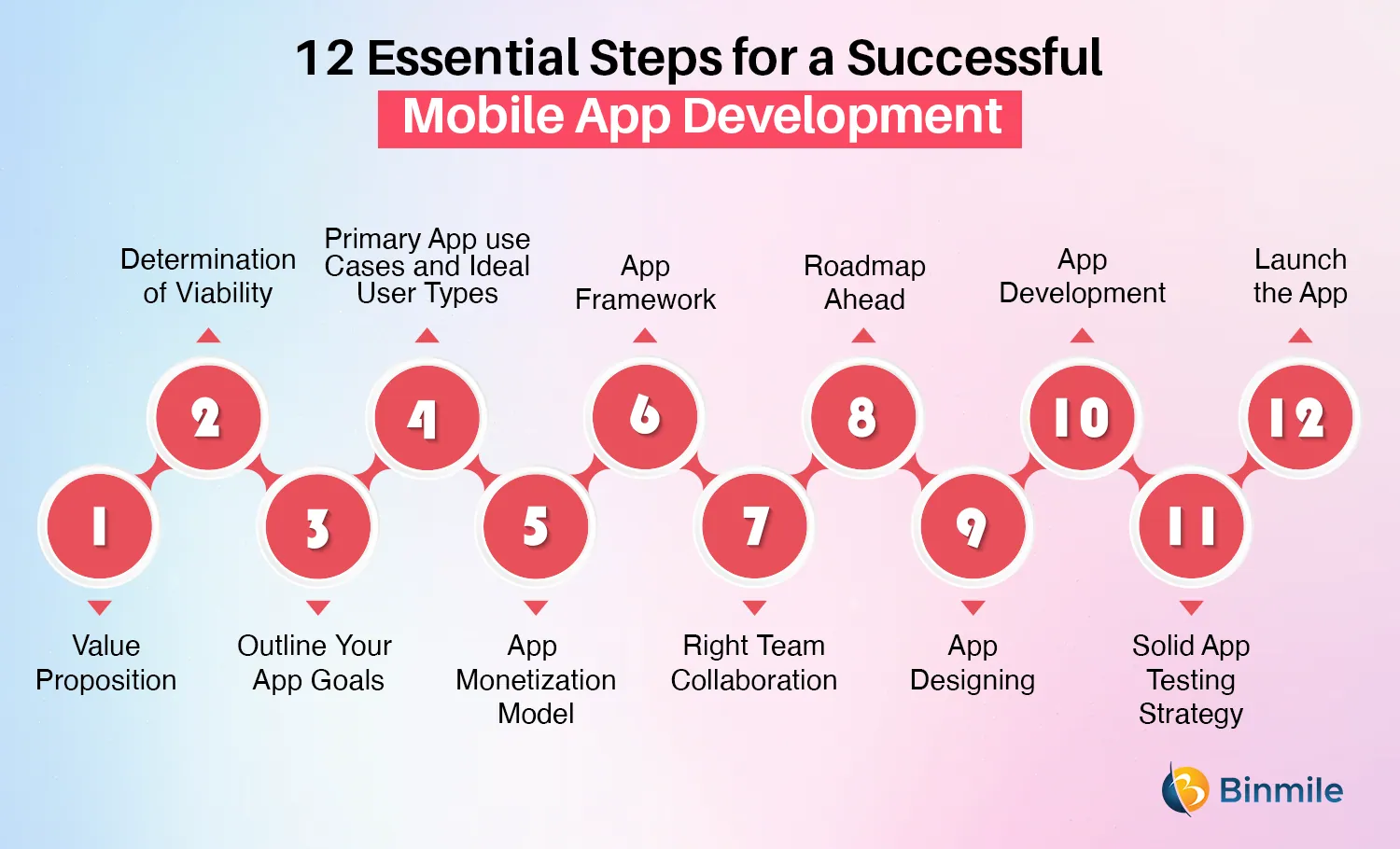
1. Value Proposition
Users download an app when it produces any value to them. Hence, you need to create a unique and well-executed value proposition for your new digital product. Think about how your app is different, what benefits it offers to customers, and how the app improves the life of customers. Four main features of an excellent unique value proposition (UVP).
- Benefits-focused
- Clear
- Concise
- Unique
2. Determination of Viability
Market Research and SWOT analysis are two powerful ways to determine the viability of your product. Before investing in market research, validate the concept of building an app. Go for a SWOT analysis to understand where your company stands when identifying the strengths, weaknesses, opportunities, and threats concerning a specific business idea. It also lets you achieve better mobile app development outcomes.
- Strengths: Positive side of your mobile app idea
- Weaknesses: Limitations that put apps at a disadvantage on the market
- Opportunities: Transform ideas into new opportunities
- Threat: Deter if there is any threat concerning your idea
3. Outline Your App Goals
Note the specific, measurable, achievable, realistic, and time-bound (SMART) goals define the mobile app development journey according to user interaction needs and business objectives. After this, brainstorm the actions that app users would like to perform. Also, check how your competitors are doing in the market and define the right key performance indicators to measure success.
4. App Use Cases and Ideal User Types
Use cases are essential for the app’s overall usability and user engagement. So, brainstorm the primary use cases according to the targeted audience. Launch an uncluttered app with a specific set of use cases for different groups of people. Also, invest time in making app user segmentation by
- Device info
- Geographical location
- User info
- User behavior
5. App Monetization Model
Create a monetization model that ensures the long-term longevity of the app. Give importance to user intent and user journey while making a app monetization model. The following are the most common revenue-generating models for your app.
- Pay per download model
- Ad revenue model
- Freemium features model
- In-app purchase model
- Affiliate program model
- Hybrid app monetization model
6. App Framework
Determine the proper framework of the app as per Android, iOS, Windows, or cross-platform needs. Look closely at the vital technology stack for ensuring maximum return on investment (ROI). Look for the proper frontend, backend, server-side, testing, and other tools for making the most out of the engaging mobile app.
7. Right Team Collaboration
You need to build the perfect development team for effective mobile app development. The right team knows how to make an app, whereas the wrong team can ruin the app. Following is a list of the people that make up a perfect and collaborative app development services. These include:
- UI/UX specialists
- product managers
- scrum managers
- A-level designers
- Business analysts
- QA testers
- Technology specialists
8. Roadmap Ahead
Define a well-planned product roadmap of your app that will help you specify the vision and blueprint of the app. The roadmap relates to your long and short-term goals concerning different requirements for the app. You need to make a minimum viable product (MVP) with unique features and functionalities.
9. App Designing
Users are more likely to engage with your app when it delivers a strong user experience (UX) rooted in solid UI/UX design principles. Set clear design goals and prioritize simplicity and usability. Encourage your creative team to follow established design guidelines, select an appropriate theme and style, and explore multiple design concepts. Keep in mind that applying the right UI/UX principles can significantly enhance the app’s overall performance and user satisfaction.
10. App Development
Once you are ready with the app design, it is time to build the app. Start the app development process with a prototype. Build the most used user flow and test the same. Design a flexible and scalable architecture so that you can handle complexities in the later app development stage. Also, make quick adjustments once the app starts taking shape.
11. Solid App Testing Strategy
Keep on testing the app product until it becomes free from defects. Make a proper app testing strategy and stick to the mantra: Test, test, and test. You can try automated, manual, usability, and performance software testing qa for better app testing outcomes. Give importance to app quality, test quality, incident reports, and test information.
12. Launch the App
The final step in building a successful app for mobile is launching the app. First, create a scalable and robust deployment process. Also, look at data analytics to optimize your app performance and usability. Stick to the following checklist for an entire post-launch plan:
- Get user feedback
- Gather app data
- Invest in a comprehensive analytics tool
- Market your mobile app
- Get consistent mobile app support
How to Measure and Improve Mobile App Engagement: Key Performance Metrics
Marketers trying to gauge the success of their app’s relationship with their users need to quantify how engaged those users are. App engagement metric is a great way to determine what’s working and what’s not. Here are 10 key metrics formulas you can use to measure the effectiveness of your audience-building efforts.

1. Retention Rate (RR)
RR is the most critical KPI that mobile marketers use to analyze the ratio of users’ engagement with your app.
RR = Number of users in the cohort who use the app in a set period/number of users in the cohort who use the app in a previous period.
2. Churn Rate (CR)
RR is a great way to see a picture of how many users are hitting your app. On the other hand, Churn Rate, helps you measure how many app users depart from your app in a given period.
CR = 1- retention rate
3. Monthly Active Users (MAUs)
MAU is the simplest way to understand the number of engaged users coming to your app actively in a particular month. It also shows how many people log an app session for 30 days.
MAU = The number of users who opened the app in a month
4. Daily Active Users (DAUs)
DAU is the best way to understand how many highly engaged customers visit your app daily. It lets you know the number of audiences actively using your app regularly.
DAU = The number of users who opened an app in a day
5. Daily Sessions Per Daily Active User
This engagement metric comes to your help when you need to examine how many times a day an app is being accessed by users. It enables brands to get a unique view of their audience’s daily engagement.
Daily Sessions per DAU = Number of daily sessions/number of daily active users
6. Stickiness
Daily sessions per DAU offer you a detailed view of repetitive user activity at a micro-level. Stickiness enhances this picture further by integrating a more monthly perspective.
Stickiness = DAU/MAU
7. Average Session Length
Session length is a unique KPI for measuring the average time spent by users on your app in each session. It also lets you know about a particular time when the app was opened in front of each user.
Average session length = Total amount of time spent in the app (minutes)/Total number of users.
8. Cost Per Acquisition (CPA)
CPA is related to accounting and monetary investment. It lets you know how much you are spending on each audience member. It also clarifies the division of costs concerning a given campaign and compares the relative impact of different campaigns.
CPA = Cost ($)/Number of acquisitions
9. Customer Lifetime Value (LTV)
LTV is directly concerned with the value and revenue generation of your organization. It also offers a clear picture of the brand-customer relationship. A higher LTV means a customer is getting what it expects from your mobile app.
LTV = Total user spend ($)/Total number of buyers to date
10. Return on Investment (ROI)
This unique mobile marketing KPI gives you a clear picture of determining future strategy. It lets you know about the generation of value against the amount of money invested by the brand.
ROI = Gain for investment-cost of investment/cost of investment
Also Read: App Development Business Case Study & Cost
Take Your First Step in Creating Engaging Mobile App
Building an engaging mobile app matters the most for enterprises of all sizes and types. It can give your brand a competitive edge ensuring increased sales, improved user experience, better customer engagement, and higher brand awareness. Mobile app development services by top app development companies focus on experience design, IT integration, IT backend, architecture, quality assurance (QA), marketing, support, and maintenance to make your mobile app engaging with your customers. They also adopt different steps and processes to render an app that matches your business ideas and growth well.
Ready to build a high-performing mobile app? Connect with top mobile app developers today and take your business to the next level!
Frequently Asked Questions
These ideas cater to diverse user needs and have strong market potential.
- Personal Finance Tracker: Help users manage budgets, track expenses, and achieve financial goals.
- Health and Fitness App: Provide workout routines, diet plans, and progress tracking.
- Language Learning App: Offer interactive lessons, quizzes, and real-time speaking practice.
- Online Marketplace: Connect buyers and sellers for niche products or services.
- Meditation and Wellness App: Guide users with mindfulness exercises and stress relief techniques.
- AI-Powered Chatbots: Assist with customer service or productivity tasks.
- Identify Market Needs: Research trends, user pain points, and gaps in the market to find opportunities.
- Define Your Target Audience: Understand the demographics, preferences, and challenges of your potential users.
- Analyze Competitors: Study similar apps to identify strengths, weaknesses, and unique features you can offer.
- Focus on Your Expertise: Choose an app idea aligned with your skills, resources, or industry knowledge.
- Validate the Idea: Gather feedback through surveys, interviews, or prototypes to confirm demand for your app.
- Evaluate Revenue Potential: Assess monetization options like subscriptions, ads, or in-app purchases to ensure profitability.
- Consider Feasibility: Factor in development complexity, budget, and timeline to determine what’s achievable.
- Align with Long-Term Goals: Ensure the app aligns with your personal or business objectives.
By combining user-centric research with strategic planning, you can choose app ideas that are practical and impactful.
- Identify a Problem: Startups focus on solving specific user pain points or addressing unmet market needs.
- Market Research: Analyze trends, target audience behavior, and competitor apps to discover high-demand areas.
- Define the Niche: Narrow down to a unique value proposition or underserved market segment.
- Validate Ideas: Test concepts through surveys, focus groups, or MVPs (Minimum Viable Products) to gauge user interest.
- Align with Business Goals: Ensure the app aligns with the startup’s vision, resources, and scalability plans.
- Revenue Potential: Consider monetization strategies like freemium models, ads, or subscriptions.
- Leverage Expertise: Choose apps that utilize the startup team’s core strengths and technological capabilities.
- Resource Feasibility: Evaluate budget, timeline, and technical complexity to prioritize realistic projects.
Startups often build apps that balance user demand, innovation, and operational feasibility.
